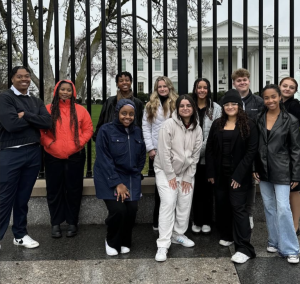Note: The authors recognize the differences between the terms “Hispanic” and “Latino/a/x.” However, for this article the authors chose to use them interchangeably.
The demographics tell the truth: America is changing. Our nation is more diverse, more global, less monochromatic, and less monolingual. Our sizeable Hispanic population is a principle driver of those changes. Harvard professor Samuel Huntington noted in his controversial 2004 article “The Hispanic Challenge,” which negatively forecasts the social, political, and economic changes brought about by two decades of significant immigration from Latin America, that “The United States ignores this challenge at its peril.” A decade later, some in our society continue to respond with the same fear and trepidation and have called for America to wall itself off from these changes. We at Rollins can embrace them as an opportunity to transform our campus into the global learning community that we claim as part of our mission. However, we can choose to ignore them at our own peril as well.
First, the demographics:
To put this Latino/Hispanic growth in perspective, consider the following. There are 53 million self-identified Hispanics in the U.S., which represents the second largest Spanish-speaking population in the world (larger than Spain, Argentina, or Colombia). This group also holds $1.7 trillion in purchasing power in the U.S. economy, which would make it the 16th largest economy globally. In addition to being the largest and fastest-growing ethnic group in our country, the Latino population is notably younger. While the average age of the Anglo community is 40, the average age of a member of the Latino community it is 27 (Rodriguez, 2008).
The future impact of Latino population growth will be seen most notably in the workforce of tomorrow. Beginning next year, in 2017, Latinos will comprise the majority of entrants into the U.S. workforce. Every 30 seconds two non-Hispanics retire while one Hispanic turns 18. This is probably one of the reasons that a recent Forbes article was titled “Without Hispanics America’s Corporations Can’t Grow and Compete” (Llopis, 2015). Furthermore, they are drivers of economic growth in our country, as it estimated that there are over 3 million Hispanic-owned businesses, with an ownership growth rate 15 times greater than the rest of the U.S. population (commerce.gov). In addition, it is estimated that by 2030 there will be an increased labor shortage around the world, including in the U.S. (Strack, 2015).
Now, why this matters for Rollins:
Why are these demographic changes important for Rollins and other institutions of higher education? While college enrollments have declined nationally, Latino/a/x college enrollments have actually increased. Krogstad note that Latinos make up over 35% of 18-24-year-olds in two or four-year colleges. If Rollins stays on the sidelines and does not seek out ways to both recruit and retain qualified Hispanic students, we put ourselves at a significant disadvantage that could have ramifications on the long-term viability of the institution.
But aside from the pool of future applicants to Rollins, as a developer of the future workforce and leaders for organizations, Rollins students of all ethnic backgrounds need to live with, study with, engage with, and learn from their future co-workers. To not prepare our students for the demographic realities that await them in their careers would be to shortchange our students’ learning experiences. Furthermore, to be unresponsive to the “Latino Boom” goes against the core mission and values of our institution, one that espouses diversity and inclusion as a focal point and a key in preparing our students for lives of responsible leadership and for rich participation in our nation’s democratic process.
Finally, how can Rollins respond to this challenge?
Here’s the good news: we are off to a good start. Admissions has recently hired an Associate Director of Admission for Diversity and Inclusion, Mr. Lester Alemán, to spearhead and coordinate our efforts both in the recruitment and retention of students of color to our campus. This position clearly demonstrates the College’s commitment to D&I work now and for years to come and is a step in the right direction, especially given that the demographics of our campus community does not necessarily reflect the state of Florida. While 24% of Floridians identify as Hispanic, only 14% of our day school program do. So, there is work to be done. But our charge is to not only increase the enrollment of Hispanic students on our campus, but to ensure that we promise a welcoming and safe environment where these students can flourish. The faculty and staff need to mentor these students once they are here and cultivate them into future campus leaders who, in turn, will mentor the next incoming cohorts of students. Current students must come out of the shadows, be proud of their heritage, connect with their peers, and take care of one another.
Finally, it’s on the whole Rollins community to stand up and speak out against hate and intolerance. We have come together as a community before, and we are confident that we can and will again. The institutions and workplace of tomorrow will be different: will our students be prepared to navigate that difference?
¡Vivan los Tars!







Be First to Comment